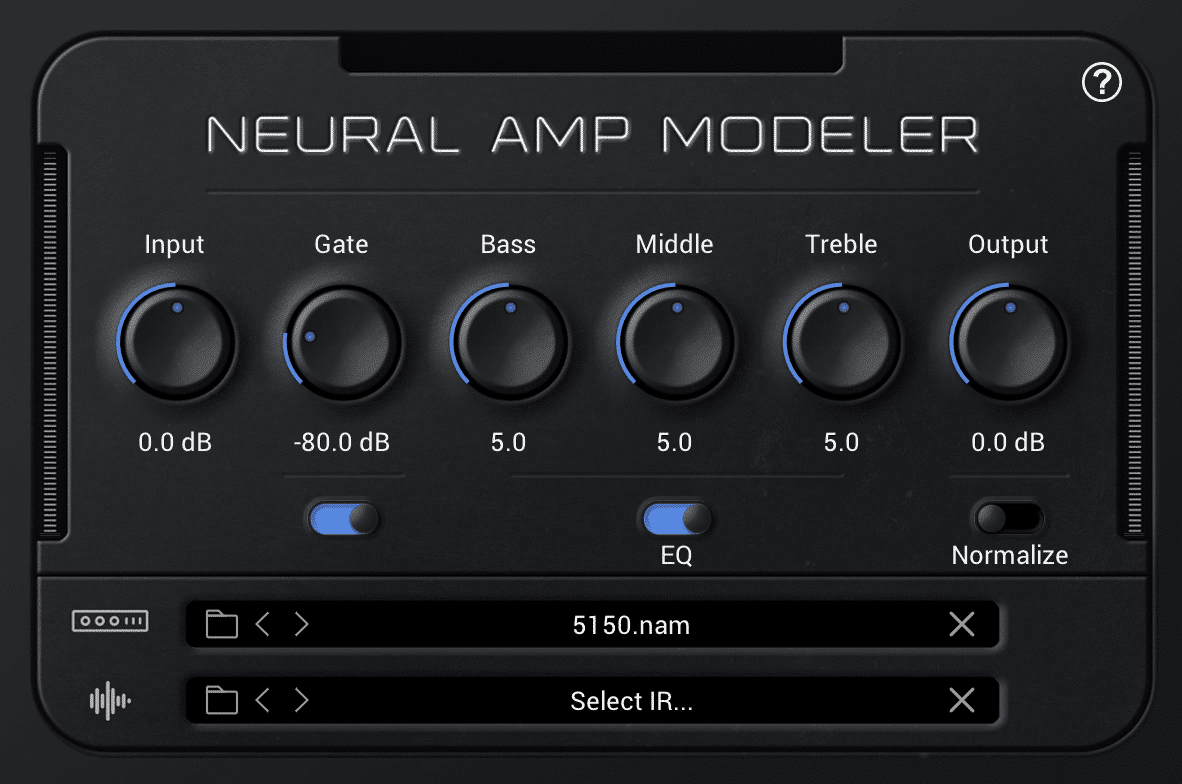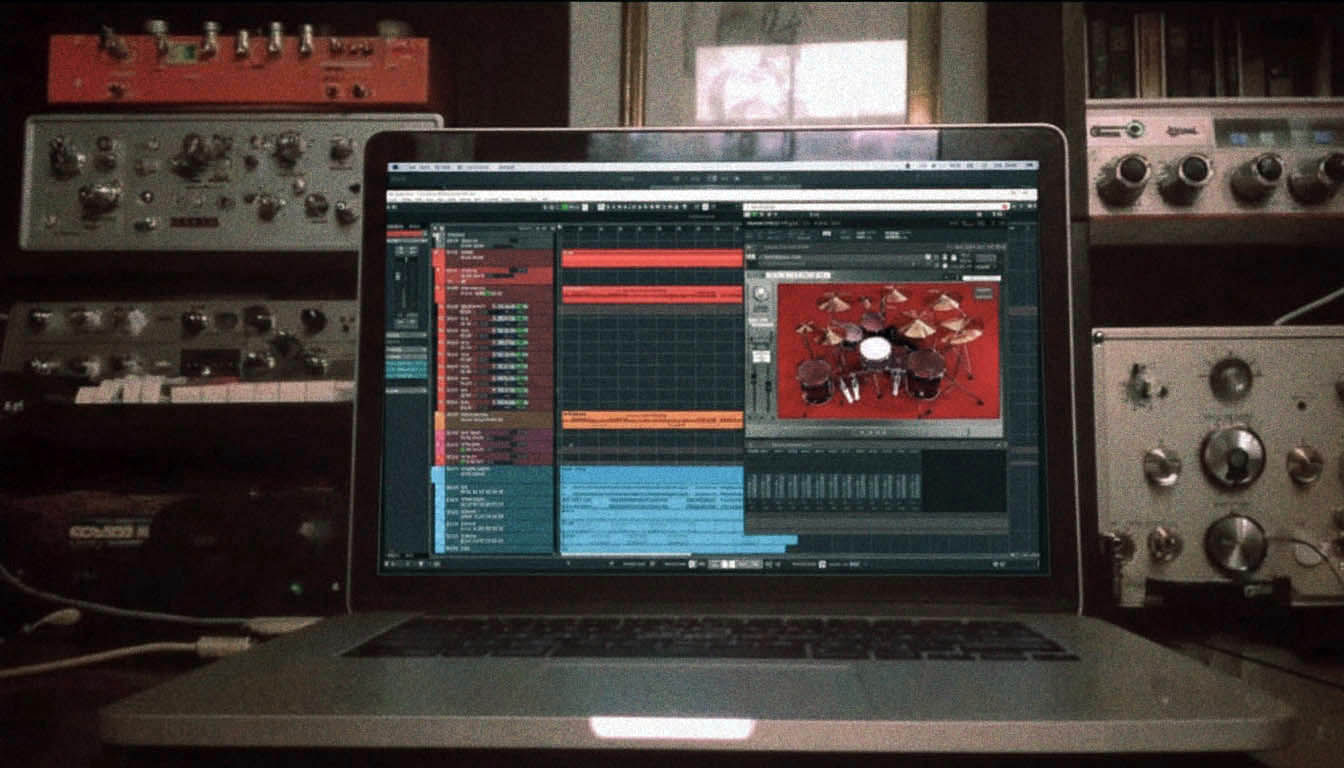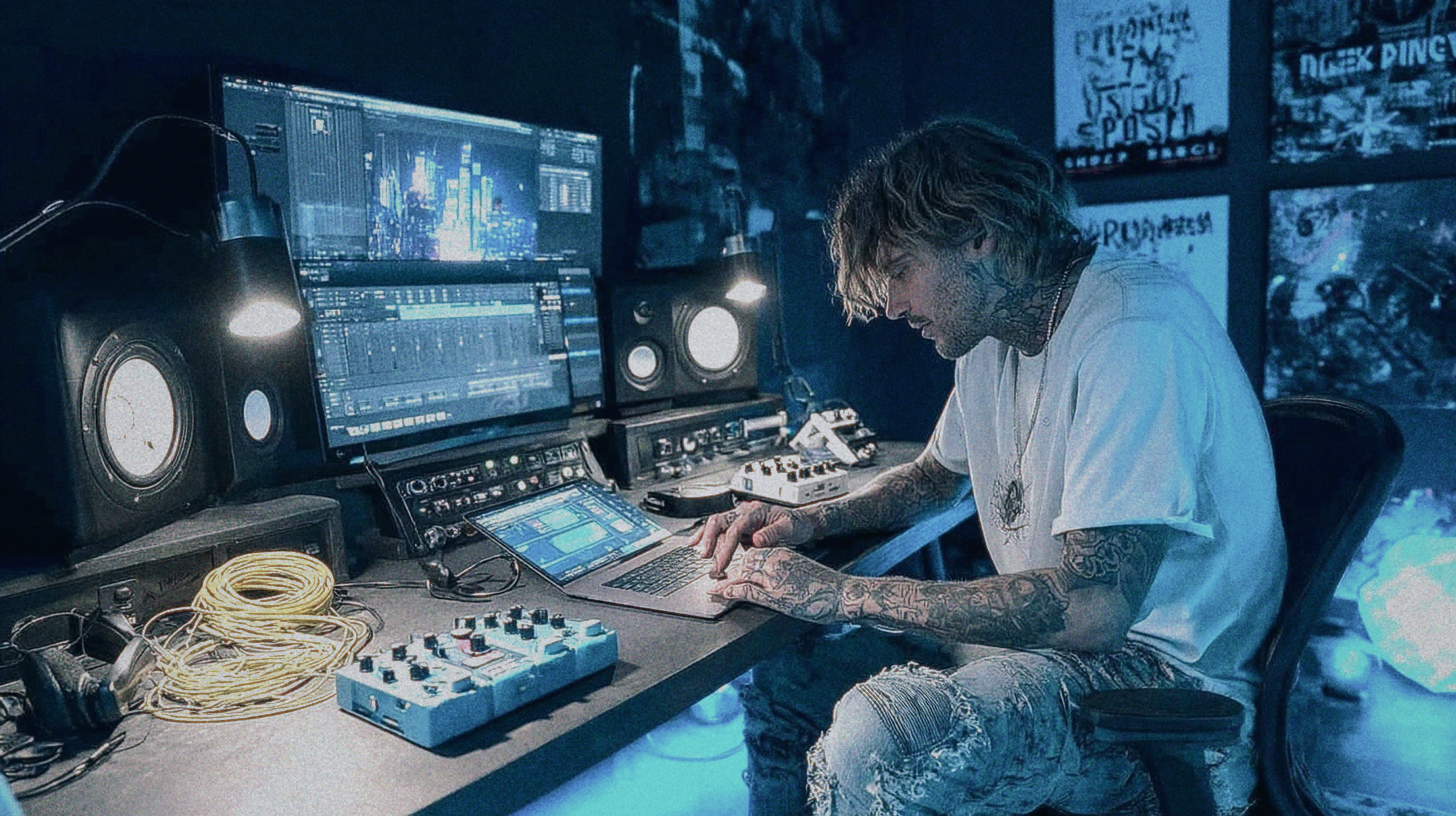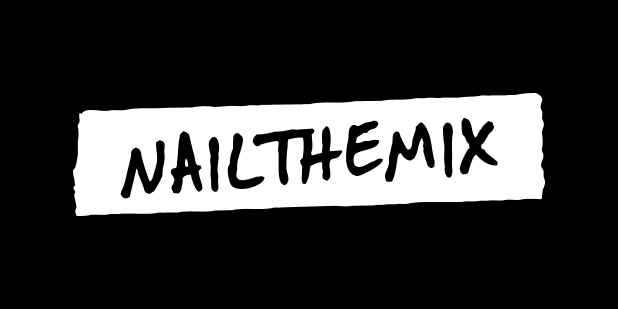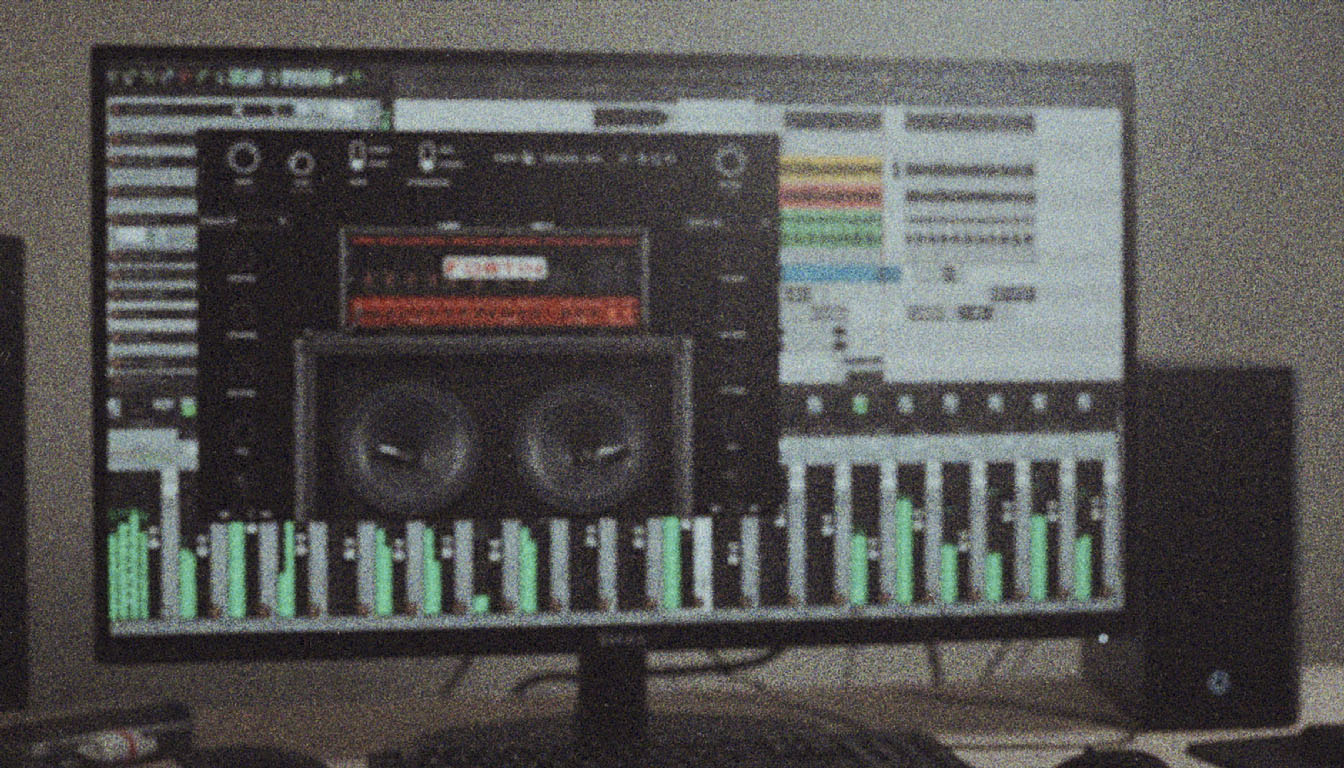
What Is An 808: How to add heavy sub-bass to a metal song
Nail The Mix Staff
You’ve heard ‘em. Those earth-shattering, speaker-cone-rattling low-end booms that add serious weight to modern tracks, especially in metalcore, djent, and even some flavors of deathcore. We're talking about 808s. But what is an 808, really? And more importantly for us metalheads, how can you bend these iconic sounds to your will and make them absolutely crush in a dense, aggressive metal mix?
Forget what you think you know if you've only heard them in hip-hop. In metal, 808s can be a secret weapon for gut-punching low-end. Let's dive in.
The Lowdown: What Exactly IS an 808?
At its core, the "808" sound comes from the Roland TR-808 Rhythm Composer, a drum machine released way back in 1980. While it had a bunch of drum sounds, its kick drum was unique: a deep, boomy sine wave-ish tone with a long decay. It didn’t sound much like a real kick drum, but producers, especially in early hip-hop and electronic music, fell in love with its ability to create massive, sustained bass notes.
From Vintage Drum Machine to Modern Bass Phenomenon
Fast forward to today, and the term "808" has evolved. It often refers to any deep, pitched sub-bass sound that fulfills a similar role to that original TR-808 kick, whether it's sampled from an original machine, synthesized from scratch, or generated by a dedicated plugin. It's less about the specific hardware and more about the function and timbre: a powerful, sustained low-frequency tone.
Why 808s Aren't Just for Hip Hop Anymore
While hip-hop, trap, and EDM really popularized the modern 808 bassline, metal producers have been catching on. That distinct low-end power can add a whole new dimension to heavy music, providing a foundation that you can feel as much as hear.
Why Should Metal Producers Bother with 808s?
Good question. Metal is already heavy, right? But 808s offer something different to the typical clicky kick and distorted bass guitar.
Adding Subterranean Weight to Your Kicks
Layering an 808 underneath your main kick can give it a sense of power and depth that’s hard to achieve otherwise. Think of bands like Architects or Northlane – that massive low-end punch often has an 808 or a similar sub-enhancement doing heavy lifting. It’s about making the kick hit you in the chest, not just the ears.
Crafting Epic Drops and Impacts
Want to make that breakdown hit like a ten-ton hammer? A well-placed, sustained 808 can provide that gut-wrenching sub drop. Or use shorter, punchier 808s as impacts to accentuate specific rhythmic hits or transitions, giving them serious oomph.
Filling the Low-End Void (Carefully!)
Sometimes, even with a killer bass guitar tone and a punchy kick, there can be a gap in the very low sub frequencies. A carefully tuned 808 can fill this space, making the whole mix sound fuller and more powerful. The keyword here is carefully – too much, and you’ll have a muddy mess.
Forging Your Metal 808: Sound Sources & Initial Shaping
Alright, so you're sold on the idea. How do you get an 808 that’s fit for metal?
Where to Get Your 808 Sounds
- Classic TR-808 Samples: There are tons of sample packs out there with sounds from original TR-808 machines. Companies like Samples from Mars or Goldbaby offer high-quality captures. Look for .WAV files you can drop into your sampler of choice (like Kontakt, Ableton's Simpler/Sampler, or Logic's Sampler).
- Synthesizing Your Own Monster 808s: This is where you get ultimate control.
- Xfer Serum: A go-to for many. Start with a simple Sine wave. Use Envelope 2 (or an LFO in envelope mode) to control the pitch. A fast downward pitch sweep at the beginning (e.g., -12 or -24 semitones over 20-60ms) gives that characteristic "thwomp." Then use Envelope 1 to shape the amplitude (more on that below).
- Native Instruments Massive/Massive X: Similar principle. Use a sine or simple waveform, apply a pitch envelope for the initial punch, and an amp envelope for the body.
- Most DAWs have built-in synths capable of this (e.g., Ableton Operator, Logic ES2).
- Dedicated 808/Kick Plugins: These often give you a head start.
- Future Audio Workshop SubLab: Specifically designed for 808s and subs, blending synthesis, sampling, and distortion. Super intuitive.
- Nicky Romero Kick 2 (Sonic Academy): While a kick synth, it's fantastic for crafting tuned 808s with precise control over pitch and amp envelopes.
- D16 PunchBOX: Another great kick synth that can easily be coaxed into 808 territory.
Tuning is Non-Negotiable
This is CRITICAL for metal. An out-of-tune 808 will sound like garbage against your guitars and bass.
- Tune it to the key of the song: Often, the root note of the riff works best.
- How to tune: If you're using a sample, load it into a sampler and use the transpose function. Check it with a tuner plugin like Polyverse Gatekeeper (which has a great built-in tuner) or your DAW's stock tuner. If synthesizing, you're already setting the note.
Dialing in the Envelope: Attack, Decay, and the All-Important Length
The ADSR (Attack, Decay, Sustain, Release) envelope shapes your 808's life.
- Attack: Usually very fast (0-5ms) for immediate punch. If layering with a kick that has a strong transient, you might slightly delay the 808's attack (e.g., 10-20ms) or sidechain it so the kick's click pokes through first.
- Decay/Sustain/Release: This determines the length.
- Short 808s (e.g., 50-200ms decay, no sustain): Good for quick punches that reinforce kick hits without lingering too long and muddying things up.
- Long 808s (e.g., 500ms – 2 seconds+ decay/release): For those big, sustained sub drops or basslines. Crucially, the length should often groove with the tempo or the riff. Use your ears! A common technique is to have the 808 sustain until the next kick or beat, then cut off sharply.
The Pitch Drop: Getting That Signature "Booooom"
Many iconic 808s have a quick downward pitch envelope at the start.
- In a synth like Serum, route an envelope to the master pitch. Set a short decay (20-80ms) and modulate the pitch down by -12 to -24 semitones (1 to 2 octaves). This adds that percussive "thump" before the sustained tone.
- Some samples already have this baked in. If not, you can sometimes achieve it with sampler pitch envelopes or even by automating pitch quickly.
Brutalizing Your 808: Processing for Metal Domination
A clean sine-wave 808 will get absolutely lost in a wall of distorted guitars. You need to add harmonics and control its dynamics to make it audible and impactful.
Distortion & Saturation: Making Your 808 Roar
- Why Clean 808s Get Lost in Metal: Pure sine waves have very few (or no) harmonics. Harmonics are what help a sound cut through a mix and be audible on smaller speakers (like phone speakers or laptop speakers) that can't reproduce those super low fundamental frequencies. Distortion adds these crucial upper harmonics.
- Plugin Power: Decapitator, Saturn, and Your DAW's Nastiest Tools:
- Soundtoys Decapitator: A legend for a reason. Try styles A, E, or P. Drive it hard, then use the wet/dry knob for parallel distortion if it's too much. The "Thump" switch can be cool too.
- FabFilter Saturn 2: Incredibly versatile. "Warm Tape," "Gentle Saturation," or even some of the heavier amp models can work. Use the multi-band feature to distort only specific frequency ranges of the 808 if needed.
- iZotope Trash 2: For total annihilation or more subtle harmonic generation. The "Trash" and "Saturate" modules are your friends.
- Softube Saturation Knob: Simple one-knob wonder. Great for adding quick character.
- DAW Stock Plugins: Don't sleep on these! Logic's Overdrive/Distortion II, Ableton's Saturator/Overdrive, Cubase's Quadrafuzz v2, or Reaper's JS: Saturation can all do a decent job.
- Tip: Often, putting distortion before an EQ that shapes the tone works well, as the EQ then shapes the newly generated harmonics.
EQing Your 808 for Clarity and Punch
EQ is about making the 808 sit right without overpowering everything or disappearing.
- Making Space: The Kick Drum & Bass Guitar Dance: This is key. Your 808, kick, and bass guitar are all fighting for low-end real estate.
- High-Pass (HPF): You might think this is crazy for a sub, but sometimes a gentle HPF around 20-30Hz can clean up unnecessary rumble without losing the fundamental. Use your ears!
- Low-Pass (LPF): Often, you'll want to LPF your 808 somewhere between 80Hz and 200Hz to keep it focused in the sub region and prevent it from clashing with the midrange of guitars or bass. The more distortion you add, the higher you might be able to go, or you might want to LPF before distortion to keep the fuzz cleaner.
- Notching: Find the fundamental frequency of your main kick drum (e.g., 60Hz). You might want to notch that frequency out of your 808 slightly, or vice-versa, so they complement each other instead of fighting. Same goes for the bass guitar. If your 808 is tuned to G0 (around 24.5Hz, fundamental often perceived an octave up at 49Hz), make sure your bass guitar isn’t also booming at 49Hz. Pick one to own that space, or carve out narrow notches.
- Harmonic Enhancement: If your distortion didn't bring out enough midrange presence, you can use an EQ like FabFilter Pro-Q 3 to gently boost some of the newly created harmonics (e.g., in the 100-250Hz range) to help the 808 translate on smaller systems.
- For a deeper dive into carving out space and making elements sit right, check out our EQ strategies for metal hub.
Compression: Taming the Beast (or Making it Bigger)
Compression can control the dynamics of your 808 or add sustain and punch.
- Sidechaining for Maximum Impact: This is a classic. Sidechain your 808’s compressor to your main kick drum.
- Set a fast attack (0.1-5ms) and a release timed to the music (e.g., 50-150ms, or synced to 1/16th or 1/8th notes).
- When the kick hits, the 808 ducks out of the way momentarily, letting the kick's transient cut through. This creates clarity and punch.
- Plugins like FabFilter Pro-C 2, Waves SSL G-Master Buss Compressor, or your DAW's stock compressor with a sidechain input work great.
- Parallel Compression for Added Beef: Send your 808 to an aux track, slam it with a compressor (like a Waves CLA-76 "Bluey" on all-buttons-in "Brit" mode, or a Pulsar 1178), then blend that crushed signal back in underneath the main 808. This adds thickness and sustain without sacrificing the original dynamics too much.
- If you want to get a serious handle on how compression can make or break your low end, our metal compression secrets page has got you covered.
Transient Shaping: Defining the Attack
A transient shaper can help you fine-tune the initial hit of your 808.
- Enhance Attack: If your 808 feels a bit soft, plugins like SPL Transient Designer Plus, Schaack Audio Transient Shaper, or Native Instruments Transient Master can add more punch to the start.
- Soften Attack: If it's too clicky or fighting with the kick transient, you can soften it slightly.

100+ Insanely Detailed Mixing Tutorials
We leave absolutely nothing out, showing you every single step
Integrating 808s into Your Metal Masterpiece
Okay, you've crafted a beastly 808. Now what?
Layering with Your Kick: A Match Made in Hell (or Heaven?)
If you’re using the 808 to reinforce your acoustic kick, make sure they work together.
- Phase Alignment: Zoom in on your waveforms. Ensure the 808 isn't phase-canceling your kick drum's low end. You might need to nudge the 808 sample slightly forward or backward in time, or use a phase alignment tool like Sound Radix Auto-Align.
- EQ Complement: As mentioned, EQ them so they occupy slightly different low-end zones or so one makes space for the other.
Mono is King for Subs
Generally, keep your 808s (and most sub-bass content below ~100Hz) mono. Stereo sub-bass can cause phase issues, translate poorly to club systems, and make vinyl cutting a nightmare. Use an imager plugin like iZotope Ozone Imager (which has a free version) to check and narrow the low end if needed.
Gain Staging and Level Balancing
This is crucial. The 808 should be felt more than distinctly heard as a separate instrument unless it's a specific melodic bassline effect.
- Start with the 808 fader all the way down.
- Slowly bring it up underneath your kick and bass until you feel the low-end extend and gain power, but before it starts to sound flabby, boomy, or disconnected from the rest of the track.
- Check your mix in mono and on different speaker systems.
Don't Forget to Reference!
Listen to metal tracks that use 808s or subs effectively (think modern Periphery, Spiritbox, many metalcore bands). How loud are their subs? How do they interact with the kick and bass? This will give you a target.
Taking Your Low End to the Next Level
Crafting the perfect 808 for a metal track is an art. It involves careful sound selection, precise tuning, aggressive-yet-controlled processing, and thoughtful integration into your mix. These techniques are killer starting points, but hearing how world-class metal producers tackle these low-end challenges in real sessions? That’s a whole other level of learning.
Imagine seeing exactly how guys who mix bands like Gojira, Meshuggah, or Bring Me The Horizon dial in their subs, automate distortion, and make everything punch without turning into mud. That’s what Nail The Mix is all about. Every month, you get the multitracks from a massive metal song and watch the original producer mix it from scratch, explaining every plugin choice, every EQ tweak, every fader move. If you're serious about your metal mixes and want to truly unlock your sound beyond presets, seeing these techniques applied in real-world scenarios is invaluable.
So go ahead, fire up your DAW, and start experimenting with these 808 techniques. Make your next metal track hit harder than ever before!
Get a new set of multi-tracks every month from a world-class artist, a livestream with the producer who mixed it, 100+ tutorials, our exclusive plugins and more
Get Started for $1